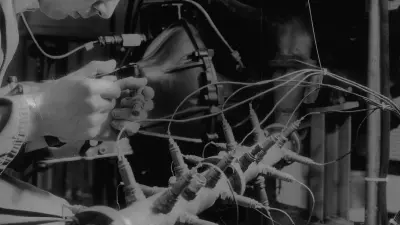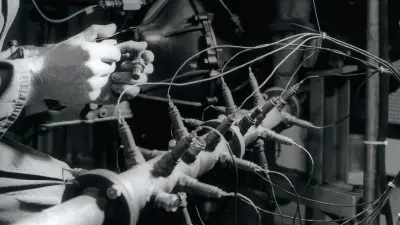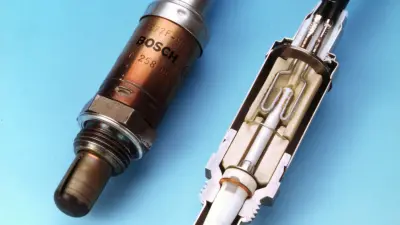Sensing the adequate mixture – the Bosch Lambda Sensor

Nowadays, automobiles with internal-combustion engines and without lambda sensor are inconceivable. It is this unassuming component that enables operation of the three-way catalytic converters that now satisfy the most stringent emission standards — a development that would have been impossible without this technology.

Bosch is one of the pioneers in exhaust treatment and is known as the inventor of the lambda sensor. Explanations of this kind of technology are often rather dry, but they help people understand why the technology works so well. The key to lambda sensor technology lies in the lambda value 1. This occurs when the ratio of 14.66 kilograms of air to one kilogram of fuel is reached in the fuel mixture and this mixture is completely combusted. However, this ratio is generally not achieved in an engine without corrective intervention. If there is too much fuel, the engine produces the pollutants carbon monoxide and hydrocarbons, and if there is too much oxygen, it generates nitrogen oxides. Even at the correct ratio, incomplete combustion will repeatedly occur, which will result in all three pollutants entering the environment via the exhaust.
The role of the catalytic converter in this scenario is to after-burn the emissions created by the incomplete combustion. The lambda sensor’s role is to measure the oxygen content in the combustion products before they reach the catalytic converter as they are expired. After all, the required 90-percent reduction in exhaust emissions can only be achieved if the sensor identifies errant exhaust gas compositions, passes this information to the engine management system (ignition and injection), and thus ensures the necessary corrections in the mixture provided.
Roots of lambda technology
The roots of lambda technology reach back to 1889, when Professor Walther Nernst, who was later awarded the Nobel Prize in Chemistry, discovered thermodynamic relationships in the form of the “Nernst equation”, which provide the vital key for current-day lambda technology.
At Robert Bosch GmbH, this topic took on major significance in 1968, when the company started to use the technology required for the lambda sensor to measure the oxygen content in the lead smelters used for producing batteries.
This expertise would go on to prove its worth when the environmental agencies in the United States announced strict exhaust emissions laws in 1970. Bosch recognized the signs of the times and started to experiment with lambda sensors for mixture regulation. Insights from other business units also flowed into the process. Knowledge about manufacturing heat-resistant ceramics in spark plug production provided the suitable materials, as the sensors had to be able to withstand exhaust temperatures of up to 1,000 degrees Celsius.
The road to series production
The advance engineering kicked off by testing third-party products. But these experiments brought about fatal results. The sensors tested lasted just one hour. There was much left to do to make them ready for market.
In fall 1971, tests were able to commence on the first of the company’s own models. The result was disheartening, as the laboratory prototypes withstood the load for just two hours. The cause was various thermal problems. And that’s not all. The low durability of the electrodes placed even greater demands on the resilience of the beleaguered engineers. In 1975, they finally achieved 250 hours service life, the equivalent to a distance of 20,000 kilometers.

The second generation
The first customer to use the Bosch lambda sensors in series production was the Swedish manufacturer Volvo, which fitted them into its 240/260 series for the U.S. market – to enormous effect. In response to the low pollutant emissions achieved, which would also satisfy the more stringent laws in the future, in 1977 U.S. manufacturer Ford sealed a supply deal with Robert Bosch GmbH for more than three million units per year.
By 1982, a new model was brought to market that offered a key advantage. It was heatable, which meant it would function reliably just 30 seconds after the engine was started from cold. At the same time, this skillful adjustment had doubled its service life to around 160,000 kilometers. This improvement was achieved by overcoming the troublesome sensitivity of the cold sensor to the hot exhaust emissions, which immediately heated the sensor to 400 degrees Celsius once the ignition key was turned.
Break-even
Thanks to this innovation, Bosch was able to expand its market position. In 1986, the 10 millionth sensor left the production line and the break-even point was reached. The heavy investments made early on had finally paid off. In January 1993, Bosch was able to celebrate the 50 millionth lambda sensor. The 500 millionth followed in May 2008, and in 2016, Bosch celebrated the no. 1 billion – and 40 years.
Author: Dietrich Kuhlgatz



